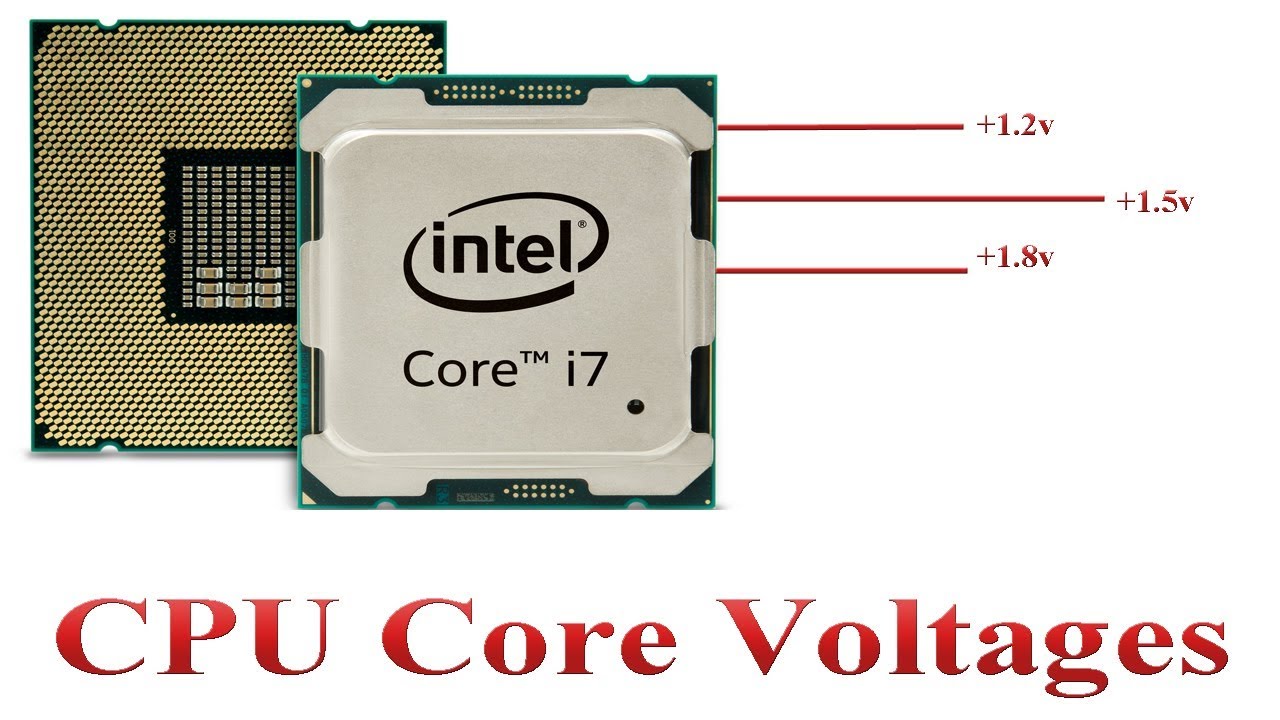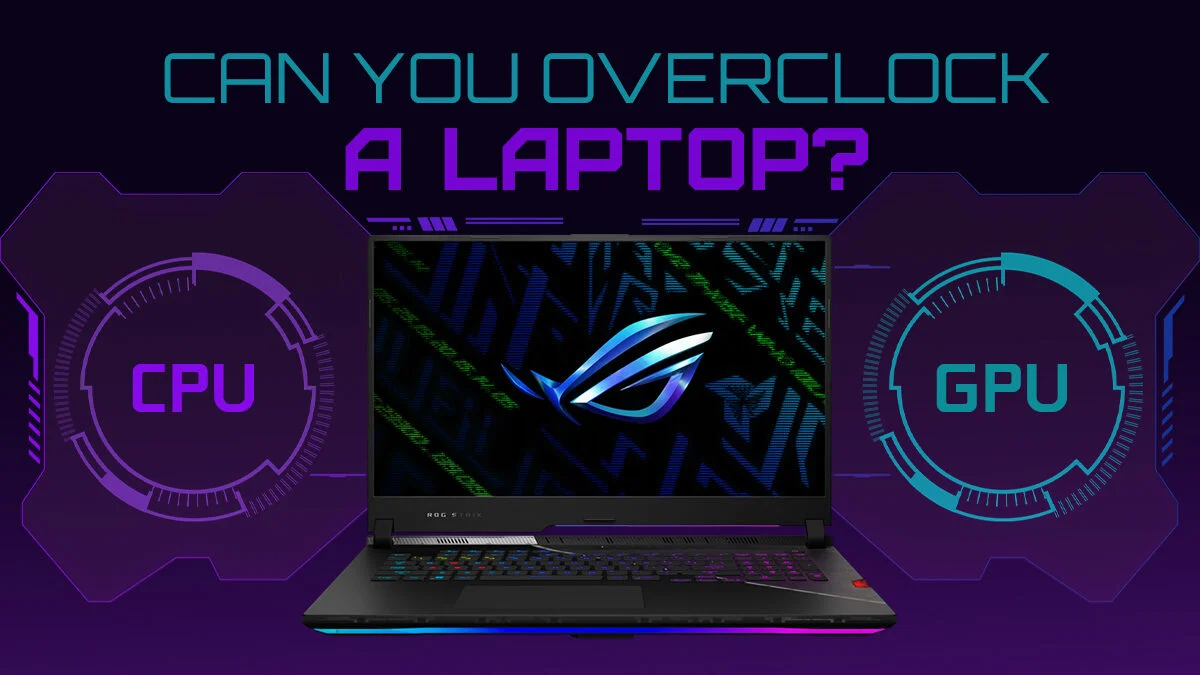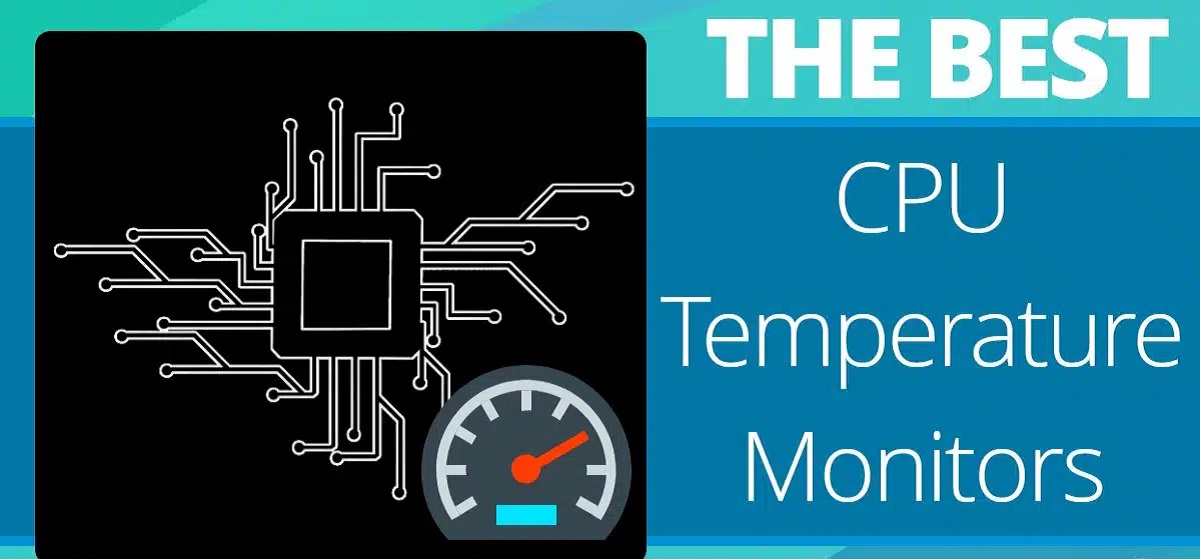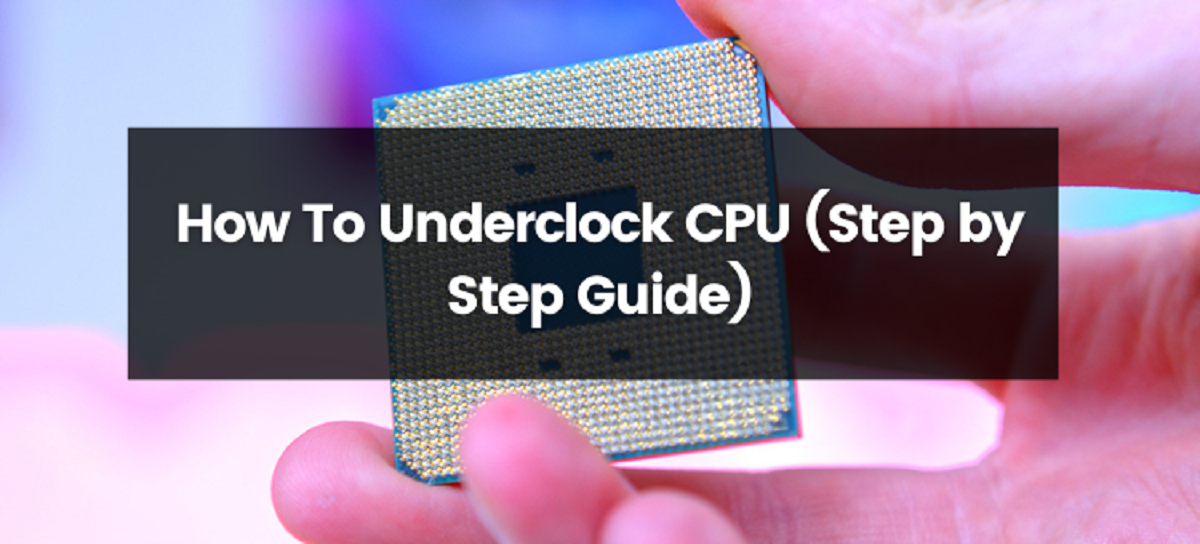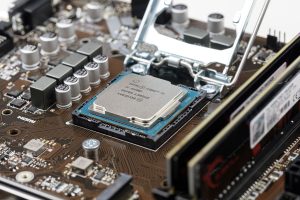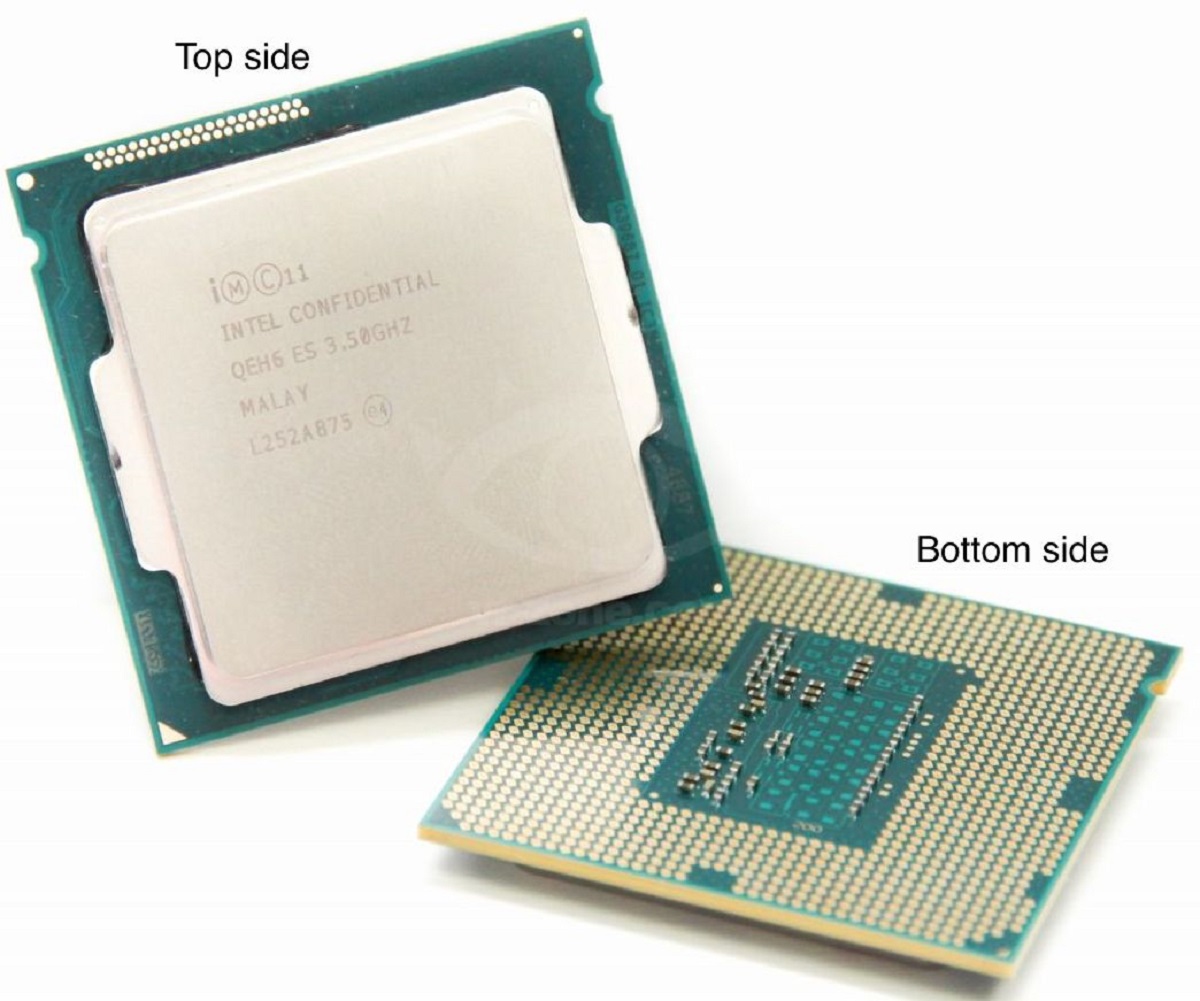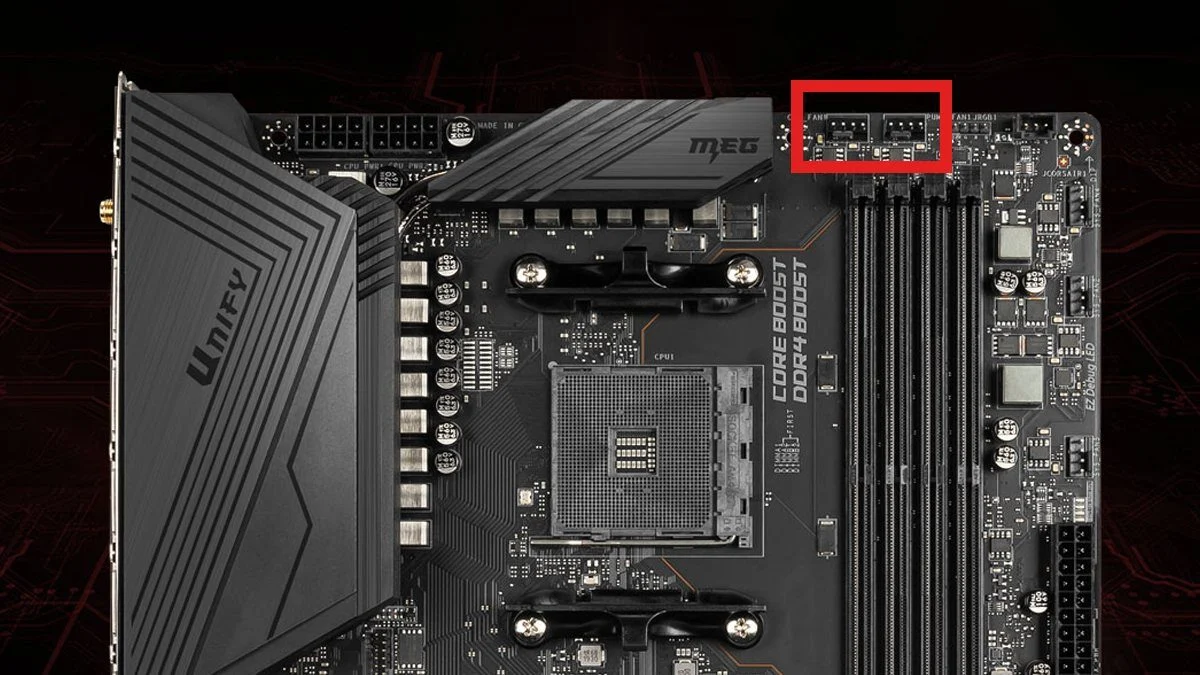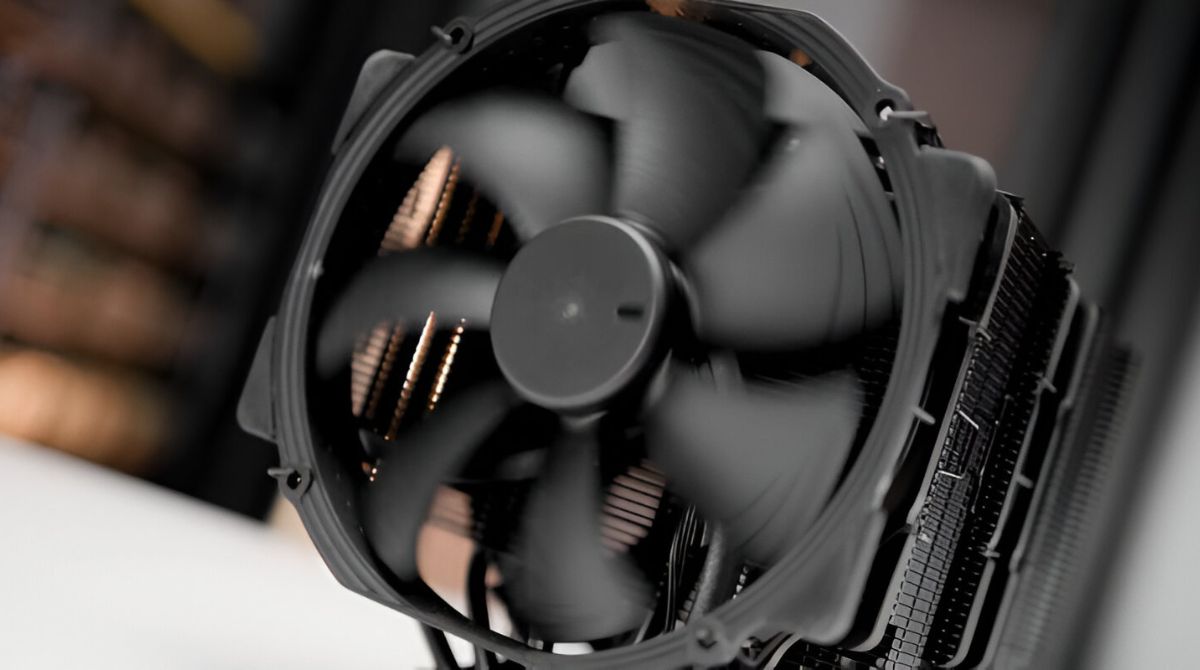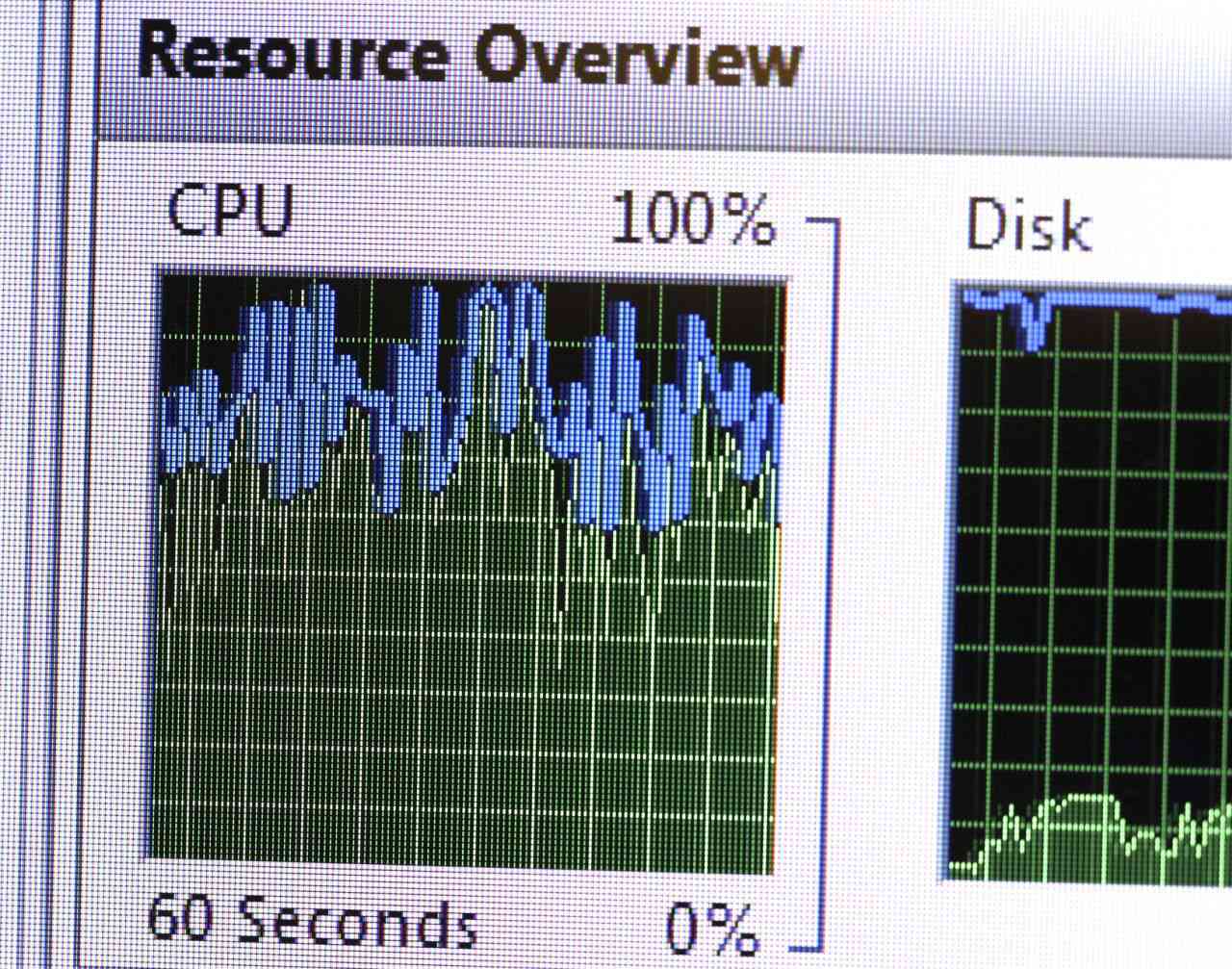What Is CPU Vcore
The CPU Vcore, also known as the core voltage, is a critical parameter that determines the power supply to the CPU (central processing unit) of a computer. It is responsible for providing the necessary voltage to ensure the stable and efficient operation of the CPU.
The CPU Vcore is an essential aspect of the CPU’s power management system. It regulates the voltage supplied to the CPU, ensuring that it receives sufficient power to perform its computational tasks effectively. The CPU Vcore plays a vital role in maintaining system stability, preventing overheating, and achieving optimal performance.
When the computer is running, the CPU consumes power to execute instructions. The CPU Vcore adjusts the voltage supplied to the CPU based on its workload. During periods of increased demand, such as when running intensive applications or multitasking, the CPU Vcore increases the voltage to provide the necessary power. Conversely, during idle or low-demand periods, the CPU Vcore reduces the voltage to conserve power and reduce heat generation.
Properly managing the CPU Vcore is crucial for maintaining the stability and longevity of the CPU. If the voltage supplied is insufficient, the CPU may not perform optimally or even fail to function altogether. On the other hand, supplying too much voltage can lead to excessive heat generation, which can cause thermal throttling, decreased lifespan, or even permanent damage to the CPU.
Monitoring and adjusting the CPU Vcore is typically done through the motherboard’s BIOS (Basic Input/Output System) settings. Experienced users may tweak the CPU Vcore settings to optimize performance, especially when overclocking the CPU to achieve higher speeds. However, it is important to note that adjusting the CPU Vcore should be done with caution and within the recommended safe limits to avoid damaging the CPU or other components.
In summary, the CPU Vcore is a critical parameter that ensures the stable operation and performance of the CPU. It regulates the voltage supplied to the CPU, adjusting according to the workload to maintain stability, prevent overheating, and optimize performance. Proper management of the CPU Vcore is crucial to ensure the longevity and reliability of the CPU.
Definition of CPU Vcore
The CPU Vcore, also known as core voltage, is a crucial component in a computer’s central processing unit (CPU) that helps regulate the power supply to the processor. It determines the amount of voltage needed to ensure optimal performance and stability of the CPU.
The CPU Vcore is responsible for supplying power to the CPU, enabling it to carry out complex computations and execute instructions. It acts as the central control that governs the voltage level delivered to the CPU, ensuring that it operates within safe and efficient limits.
The CPU Vcore is a critical aspect of the power management system of the CPU. It controls the voltage supplied to the CPU based on its workload and performance requirements. During intensive tasks, such as gaming or running resource-intensive applications, the CPU Vcore increases the voltage to provide the necessary power for smooth operation.
Conversely, during idle periods or when the CPU is under lighter loads, the CPU Vcore reduces the voltage to conserve energy and reduce heat generation. This dynamic adjustment of voltage helps to optimize power usage and prevent unnecessary power consumption, leading to improved energy efficiency.
Proper management of the CPU Vcore is vital for maintaining the stability and longevity of the CPU. An inadequate voltage supply can result in unstable operations, system crashes, and even damage to the CPU. On the other hand, excessive voltage can cause excessive heat buildup, leading to thermal throttling, increased power consumption, and potential long-term damage to the CPU.
Monitoring and adjusting the CPU Vcore can be done through the motherboard’s BIOS settings. Advanced users may choose to tweak the CPU Vcore to achieve higher performance, especially when overclocking the CPU. However, it is crucial to exercise caution and ensure that the CPU Vcore remains within safe limits to avoid detrimental effects on the CPU’s lifespan and overall system stability.
In summary, the CPU Vcore is a critical component that regulates the voltage supply to the CPU. It ensures optimal performance, stability, and energy efficiency by dynamically adjusting the voltage based on the CPU’s workload. Proper management of the CPU Vcore is essential for maintaining the longevity and reliability of the CPU.
Importance of CPU Vcore
The CPU Vcore plays a crucial role in the overall performance and stability of a computer system. It is of utmost importance for several reasons:
- Optimal Performance: The CPU Vcore ensures that the processor receives the right amount of voltage required for efficient and reliable operation. When the CPU is supplied with adequate power, it can perform tasks accurately and swiftly, resulting in improved overall system performance.
- Stability and Reliability: By regulating the voltage supplied to the CPU, the CPU Vcore helps maintain system stability. A stable voltage supply is essential to prevent system crashes, freezes, and unexpected shutdowns. It ensures that the CPU operates within safe and reliable parameters.
- Heat Management: The CPU Vcore also plays a critical role in managing heat generated by the CPU. By adjusting the voltage supplied, it helps in controlling and minimizing heat production. Proper heat management is vital for preventing thermal throttling, which can significantly impact CPU performance and longevity.
- Power Efficiency: The CPU Vcore contributes to the energy efficiency of a computer system. By dynamically adjusting the voltage based on workload requirements, it helps optimize power consumption. This not only reduces energy costs but also contributes to a greener and more environmentally friendly computing experience.
- Overclocking Capabilities: For enthusiasts and power users, the CPU Vcore is especially significant when it comes to overclocking. It allows users to increase the voltage to the CPU beyond the default settings, enabling higher clock speeds and potentially achieving superior performance. However, caution should be exercised to avoid excessive voltage, as it can lead to increased heat generation and potential damage to the CPU.
Understanding the importance of the CPU Vcore is essential for enthusiasts, gamers, and individuals seeking to optimize their computer’s performance. By ensuring the CPU receives the right amount of power, the CPU Vcore contributes to system stability, efficient heat management, power efficiency, and the ability to push the limits of CPU performance through overclocking.
How CPU Vcore Affects Performance
The CPU Vcore has a significant impact on the overall performance of a computer system. It influences various aspects that directly affect the CPU’s capabilities and the system’s overall functionality:
- CPU Speed: The CPU Vcore plays a crucial role in determining the clock speed of the processor. By supplying the necessary voltage, it enables the CPU to operate at higher frequencies, resulting in increased processing power. Higher CPU speeds lead to faster execution of tasks and improved overall system performance.
- Stability: Insufficient voltage supplied to the CPU can result in instability, causing system crashes, freezes, and errors. The CPU Vcore ensures that the CPU receives the required power for stable operations, preventing performance degradation due to frequent system failures.
- Efficiency: The CPU Vcore affects the efficiency of the CPU by optimizing power consumption. By providing the right amount of voltage based on the workload, it helps the CPU operate more efficiently, reducing unnecessary power consumption and heat generation.
- Overclocking Potential: When overclocking the CPU, increasing the voltage through the CPU Vcore is essential to sustain the heightened clock speeds. Higher voltage allows the CPU to handle the increased load and maintain stability at accelerated frequencies. This directly impacts the overall performance gain achieved through overclocking.
- Heat Generation: The CPU Vcore is directly related to heat generation. Higher voltage levels can result in increased heat production. Excessive heat can lead to thermal throttling, where the CPU reduces its performance to prevent overheating. By controlling the voltage supplied, the CPU Vcore helps manage heat levels, ensuring optimal performance without compromising system stability.
It’s crucial to strike a balance when adjusting the CPU Vcore to optimize performance. Increasing the CPU Vcore can provide a higher overclocking potential and potentially boost performance. However, it’s essential to exercise caution and ensure that the increased voltage does not result in excessive heat or risk damaging the CPU.
On the other hand, it’s equally important to avoid unnecessary voltage increases. Excessive voltage can lead to increased power consumption, heat generation, and potential long-term damage to the CPU. Properly managing and monitoring the CPU Vcore is crucial for achieving the right balance between performance gains and system stability.
In summary, the CPU Vcore directly influences CPU speed, stability, efficiency, overclocking potential, and heat generation. By providing the optimal voltage supply, the CPU Vcore ensures peak performance, stable operations, efficient power consumption, and the ability to push the CPU’s limits through overclocking.
Factors That Influence CPU Vcore
The CPU Vcore is influenced by several factors that can affect its voltage level. Understanding these factors is essential for properly managing and adjusting the CPU Vcore:
- CPU Model and Architecture: Different CPU models and architectures have varying voltage requirements. Manufacturers specify the recommended operating voltage range for each CPU model, which serves as a guideline for setting the CPU Vcore.
- Clock Speed and Workload: The clock speed and workload of the CPU directly impact the voltage required. Running the CPU at higher clock speeds or under heavy workloads typically necessitates a higher voltage to maintain stability.
- Power Supply: The capacity and quality of the power supply unit (PSU) can affect the voltage regulation. A high-quality PSU with stable voltage output helps maintain consistent CPU Vcore levels under varying loads.
- Motherboard Design and BIOS: The motherboard and its BIOS settings play a significant role in determining the available range for CPU Vcore adjustment. Some motherboards offer more extensive voltage control options and finer adjustments, allowing for better optimization.
- Ambient Temperature: The ambient temperature of the environment in which the computer operates affects the CPU’s heat dissipation. Higher ambient temperatures may require slightly higher voltages to compensate for increased heat generation and maintain stability.
- Overclocking: When overclocking the CPU, increasing clock speeds beyond the manufacturer’s specifications often requires an increase in CPU Vcore. Overclocking significantly impacts the voltage requirements and may necessitate more advanced cooling solutions to manage increased heat generation.
- Safe Operating Limits: Each CPU has predefined safe operating limits for the CPU Vcore. It’s essential to stay within these limits to prevent damaging the CPU or reducing its lifespan. Excessive voltage can lead to increased heat, power consumption, and potential long-term damage.
When adjusting the CPU Vcore, it’s crucial to consider these factors to ensure stable performance and avoid any adverse effects. Fine-tuning the CPU Vcore within safe limits, based on these influencing factors, allows for optimal performance, efficient power consumption, and better heat management.
It’s advisable to refer to the CPU manufacturer’s documentation, motherboard manual, and consult reliable sources for guidance when adjusting the CPU Vcore. Additionally, monitoring tools and stress tests can help assess the impact of voltage adjustments on stability and overall system performance.
By taking into account the factors that influence CPU Vcore, users can make informed decisions to maximize CPU performance, maintain stability, and ensure the longevity of their systems.
Adjusting CPU Vcore for Overclocking
When it comes to overclocking, adjusting the CPU Vcore is a crucial step in maximizing performance. Overclocking involves running the CPU at higher clock speeds than its default specifications to achieve increased processing power. Here are some considerations for adjusting the CPU Vcore during the overclocking process:
- Stability Testing: Before attempting any adjustments, it is essential to perform stability testing at the default CPU settings. This ensures that the system is stable and can handle additional voltage and increased clock speeds.
- Incremental Voltage Increases: When overclocking, increasing the CPU Vcore can provide stability at higher clock speeds. However, it is crucial to do so incrementally to avoid excessive voltage that can lead to increased heat output and potential damage to the CPU.
- Monitoring Temperatures: Increasing the CPU Vcore can result in higher heat generation. Proper cooling becomes crucial to prevent thermal throttling and maintain stability. Monitoring CPU temperatures using software tools is essential to ensure safe operating conditions.
- Adjusting Volts and Clock Speeds: Overclocking typically involves finding the right balance between increasing the CPU Vcore and adjusting the clock speeds. As the clock speed increases, voltage adjustments may be needed to maintain stability.
- Safe Operating Limits: It is vital to stay within the recommended safe operating limits defined by the CPU manufacturer. Pushing the CPU Vcore beyond safe levels can result in reduced CPU lifespan and increased risk of system instability.
- Testing and Revising: After adjusting the CPU Vcore and overclocking the CPU, it’s important to run stability tests to ensure that the system remains stable and reliable. If stability issues occur, further adjustments may be required to fine-tune the CPU Vcore.
It should be noted that overclocking and adjusting the CPU Vcore can void warranty and potentially damage the CPU if done incorrectly. It is recommended for experienced users who understand the risks and have proper knowledge of their CPU and system.
Proper cooling solutions, such as high-performance CPU coolers and adequate airflow in the system, are crucial when overclocking. They help dissipate the increased heat generated by the CPU when running at higher clock speeds and voltages.
Overclocking and adjusting the CPU Vcore can provide significant performance gains, but it requires careful consideration, testing, and monitoring. Each CPU and system configuration behaves differently, so finding the optimal CPU Vcore for overclocking may involve some trial and error.
Researching and consulting reliable resources, such as CPU overclocking guides and forums, can provide valuable insights and specific recommendations for adjusting the CPU Vcore based on the CPU model and desired overclocking goals.
Monitoring CPU Vcore
Monitoring the CPU Vcore is important for maintaining system stability, optimizing performance, and ensuring the longevity of the CPU. By keeping a close eye on the CPU Vcore, users can identify any issues and make necessary adjustments. Here are some methods for monitoring the CPU Vcore:
- BIOS Monitoring: Many modern motherboards provide options to monitor CPU parameters, including the Vcore, in the BIOS settings. Users can access these settings during system boot-up and check the CPU Vcore levels.
- Software Monitoring Tools: There are various software applications available that provide real-time monitoring of CPU parameters, including the Vcore. These tools can display the CPU Vcore levels, temperatures, and other vital information on the desktop for easy reference.
- Hardware Monitoring Devices: Some advanced users may prefer dedicated hardware monitoring devices to monitor CPU Vcore and other system parameters. These devices, often connected via USB or other interfaces, provide real-time information and may offer additional features like logging and alerting.
- Temperature Sensors: Monitoring CPU temperatures is also crucial as the Vcore affects heat generation. Thermal sensors built into the CPU or attached to the motherboard help monitor temperature levels, allowing users to assess the impact of the Vcore on heat output.
- Load Testing: Stress testing tools can provide valuable insights into the CPU Vcore behavior under different workloads. These tools can push the CPU to its limits, allowing users to observe and analyze the Vcore response to heavy usage scenarios.
- Trend Monitoring: Monitoring the CPU Vcore over an extended period can reveal trends and patterns in its behavior. Users can analyze data over time to identify any fluctuations or abnormalities in the Vcore levels.
Regularly monitoring the CPU Vcore and other vital parameters helps ensure that the CPU operates within safe voltages and maintains stability. Keeping an eye on the Vcore is especially crucial when overclocking the CPU, as it enables users to assess the impact of voltage adjustments on performance and heat generation.
By using a combination of software tools, BIOS monitoring, and load testing, users can gain a comprehensive understanding of the CPU Vcore and its behavior under different conditions. This knowledge empowers them to make informed decisions regarding voltage adjustments and system optimization.
It’s important to note that monitoring tools and methods may vary depending on the motherboard, CPU, and software used. Consulting the motherboard and software documentation, as well as reliable online resources, can provide specific guidance on monitoring the CPU Vcore for a particular system.
Overall, monitoring the CPU Vcore is a prudent practice for maintaining system stability, optimizing performance, and ensuring the CPU’s long-term reliability.
Common Issues with CPU Vcore
While the CPU Vcore is essential for optimal performance and stability, there are several common issues that can arise. Understanding these issues can help users identify and address them effectively. Here are some common issues associated with the CPU Vcore:
- High Temperatures: Insufficient voltage can result in inadequate power delivery, leading to higher temperatures. Overheating can cause system instability, thermal throttling, unexpected shutdowns, and potential damage to the CPU. It’s important to ensure that the CPU Vcore is set to an appropriate level to maintain safe operating temperatures.
- Overheating and Insufficient Voltage: In contrast, excessive voltage supplied through the CPU Vcore can increase heat generation and result in higher temperatures. Over time, this can affect the CPU’s lifespan and potentially cause permanent damage. Care should be taken to set the CPU Vcore within safe limits to prevent excessive heat buildup.
- System Instability: Incorrect or unstable CPU Vcore settings can lead to system instability, including freezes, crashes, and the infamous blue screen of death (BSOD). It’s crucial to adjust the CPU Vcore within safe limits, considering the CPU model, workload, and cooling capabilities to prevent these issues.
- Reduced Lifespan: Excessive voltage supplied through the CPU Vcore can negatively impact the CPU’s lifespan. Continuously operating the CPU at high voltages can cause accelerated degradation, reducing its overall longevity. Proper voltage management, within the manufacturer’s specified safe limits, helps ensure a longer lifespan for the CPU.
- Power Consumption: An imbalance in the CPU Vcore can result in increased power consumption. Higher voltages tend to increase power draw, leading to higher energy costs and increased heat generation. Optimizing the CPU Vcore can help achieve more efficient power usage, reducing energy consumption and minimizing heat output.
- Incompatibility with Overclocking: When overclocking, finding the optimal CPU Vcore settings can be challenging. If the CPU Vcore is set too low, the system can become unstable. Conversely, excessively high voltages can damage the CPU. It’s essential to gradually increase the CPU Vcore within safe limits during overclocking while closely monitoring stability and temperatures.
Addressing these common issues requires careful consideration of the CPU model, workload, cooling solution, and manufacturer’s recommendations. Adjustments to the CPU Vcore should be made gradually and with proper testing to ensure stability and prevent any adverse effects on the system.
It’s important to consult reliable sources, such as CPU and motherboard manuals, online forums, and expert advice when troubleshooting CPU Vcore-related issues. Thoroughly researching and understanding the potential risks and best practices for setting the CPU Vcore can help avoid these common issues and maintain a stable and reliable system.
Conclusion
The CPU Vcore is a critical component in a computer system that determines the voltage supplied to the CPU. It plays a vital role in maintaining system stability, optimizing performance, and ensuring the longevity of the CPU.
Understanding the importance of the CPU Vcore allows users to make informed decisions when adjusting and monitoring this parameter. Proper management of the CPU Vcore is essential for achieving optimal performance, managing heat generation, and minimizing power consumption.
Factors such as CPU model, workload, power supply, motherboard design, and ambient temperature influence the CPU Vcore. Users should carefully consider these factors when adjusting the CPU Vcore to ensure stable operations and prevent any potential issues or damage to the CPU.
Monitoring the CPU Vcore through software tools, BIOS settings, and hardware monitoring devices allows users to keep track of voltage levels and assess the impact on performance and heat generation. Regular monitoring helps maintain system stability and provides valuable insights when overclocking the CPU.
It’s important to be aware of common issues associated with the CPU Vcore, such as high temperatures, system instability, reduced lifespan, and power consumption. Addressing these issues requires proper voltage management, adherence to safe operating limits, and diligent troubleshooting.
In summary, the CPU Vcore is a crucial aspect of computer system performance and stability. By understanding its role, adjusting it appropriately, and monitoring its behavior, users can optimize their CPU’s performance, maintain system stability, and prolong the lifespan of their computer systems.







